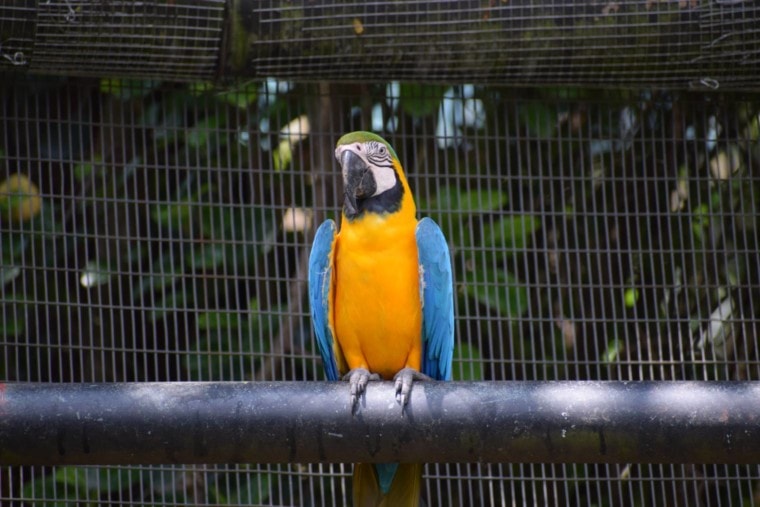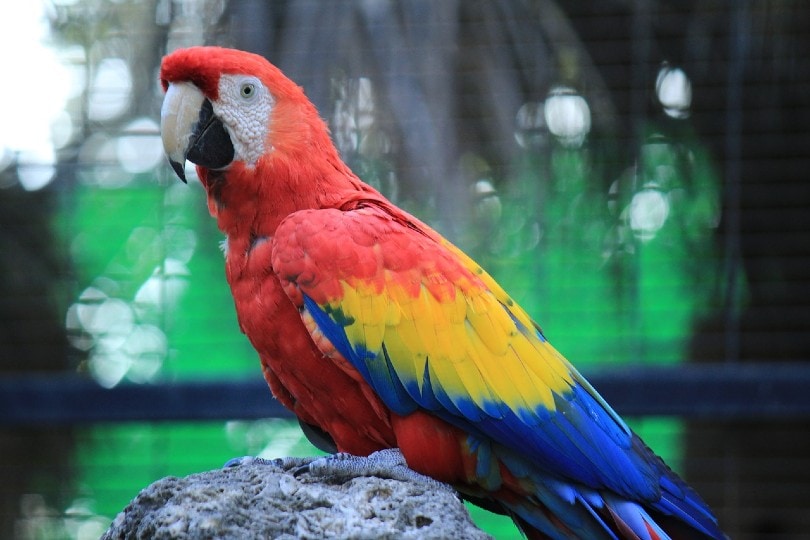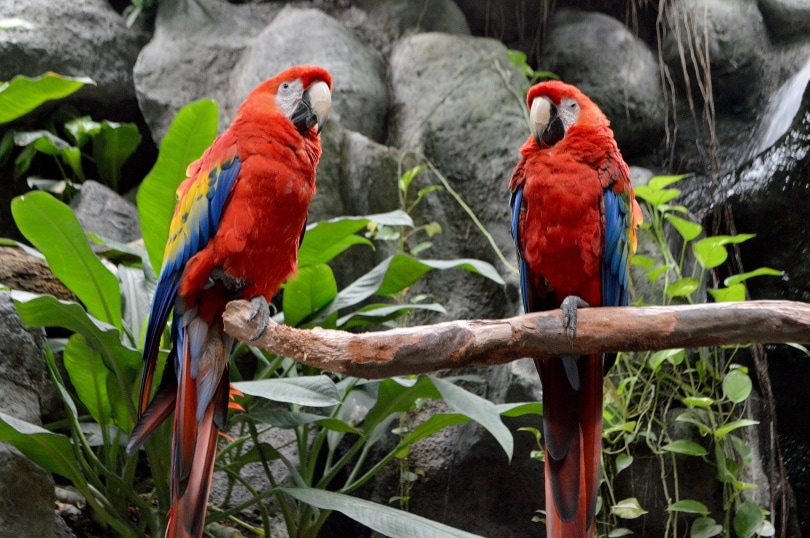
If you are the proud owner of a magnificent macaw, you already know how bright, curious, and loving these birds are. However, their emotional nature is also very complex. Indeed, since macaws are very possessive of their owner and become highly attached to their human parent, it can be difficult to introduce them to a new bird. They are also territorial and can become aggressive towards newcomers if they feel they are being “replaced”. Therefore, it can be quite tricky to make a macaw live in the same cage with another bird, even if it is the same species.
But unfortunately, there is no scientific evidence that this cohabitation will be successful. Indeed, although some macaws can be friendly with birds of their kind or other species, it is not advisable to house a macaw with another bird, especially if they have not been raised together.
Some macaws’ owners say you can try cohabitation with the following species:
 Can Macaws Live With Other Macaws?
Can Macaws Live With Other Macaws?
Macaws are birds that do not tolerate solitude. Therefore, it is normal to want to put two birds together in the same cage so that they can keep each other company. Is it possible? Yes, but to a certain extent.
A good option would be to adopt two macaws raised together. Since they are used to each other, there will be less risk of aggression. In addition, they will already have developed a strong bond of affection for each other. So, this is the surest way to make sure that your macaw pair get along well.
It may also be better to keep a male and female macaw together. They will be less inclined to become territorial, and their close emotional bond will save you from becoming the only object of your macaw’s attention!
However, be aware that keeping two macaws of the opposite sex together could eventually lead to baby macaws!

What to Do if You Want Your Macaw to Live With Another Bird
When it comes to cohabitation between birds, there are certain principles to follow to put the odds in your favor. But these are rules of thumb, not absolute truths; you will never have any guarantee that the cohabitation will go well, and conversely, you may have pleasant surprises, depending on the specific temperament of each bird and its environment. It is your responsibility to take all possible precautions to ensure the safety of your birds.
So, in general, it is preferable to put together only birds of comparable size (to avoid that the smallest bird is too seriously injured in the event of a fight), which have the same needs in terms of environment, and whose temperaments are compatible. Thus, very calm birds will hardly appreciate being disturbed by more dynamic ones. It is necessary to know the character and requirements of each bird before attempting to put them together.
For each species, it is best to have at least one pair or trio so that the bird does not end up alone. In addition, females will often be less of a problem than males. Finally, be aware that hand-raised birds generally do not support cohabitation very well, as they have not learned to live with their congeners in the same way as others.
Ensure a Comfortable Environment for Both Species
In general, overcrowding cages and aviaries should be avoided, which would adversely affect the welfare and cohabitation of birds. The number and species of birds to introduce depends on the size of your aviary. If they have room, the birds will be less stressed and can find a quiet place or take refuge in the event of a conflict.
If you have an outdoor aviary, it is also essential that all of its inhabitants can withstand the climate in your area. The ideal is to choose birds that come from geographically close regions. Some species need a lot of light; others (mainly tropical species) prefer planted, more shaded areas.
Resources must be sufficient for everyone with multiple feed points. You should choose species with a similar diet.

Do Not Rush the First Meeting Between Your Birds
In any case, before introducing a new bird to your macaw, remember to respect a quarantine period. During this period, monitor the new bird closely and look for the presence of any respiratory disorders, diarrhea, and other illnesses. Observe its plumage carefully: if they do not stop plucking their feathers, your new bird is clearly showing some distress.
It is best to place the new bird in a cage near your macaw for a few days, to observe how each is behaving and to detect conflicts early. Finally, do not introduce new birds during the breeding season, or conflicts may arise more easily. Therefore, you should wait until this period has passed.
Final Thoughts
The success of cohabitation between your macaw and another bird will depend on the character of both species: that is, their ability to coexist with other species in their territory. It is said that macaws, amazons, and conures can live in the same cage, but it is impossible to know if cohabitation will be successful or not. Therefore, if you wish to try the experiment, you must respect the precautions mentioned in this article, and above all, seek advice from an avian veterinarian before initiating such cohabitation.
Either way, you should never go against the rhythm and will of your birds. And, most importantly, don’t force them to cohabit if you see signs of aggression or distress in either species.
Featured Image Credit: K.K.T Madhusanka, Shutterstock

 Can Macaws Live With Other Macaws?
Can Macaws Live With Other Macaws?






